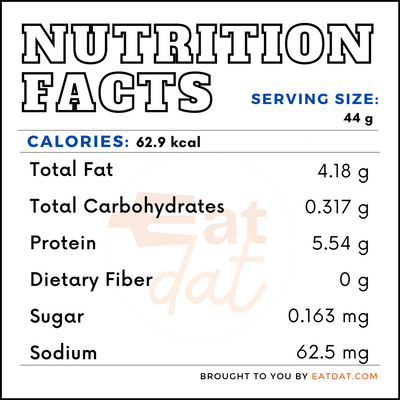
Egg
What is an egg?
In simple terms, an egg is a complex structure that develops to nourish an embryo.
- When fertilized, they only require warmth and moisture to create a healthy chick.
- While there are a plethora of breeds and varieties of fowl around the world, the most valuable are the egg producers.
The top 5 most popular ways to eat an egg, according to Sweety High are:
- Poached
- Over Medium
- Over easy
- Soft Boiled
- Deviled Eggs
- Baked
- Sunny side Up
- Quiche
- Hard Boiled
- Frittata
Origin
Dinosaur fossils and eggs existed 190 million years ago, but their descendants, wild fowl, were only domesticated around 7,000 years ago. Fowl were already laying eggs for humans in Egypt and China back in 1400 BC. In Europe, there is evidence of domesticated fowl in 600 BC. Much later, Christopher Columbus is said to have transported fowl and eggs over to the Americas in 1493.
In the 1920s, almost half of all Americans lived on farms and most of those farms had egg-producing fowl. Over the following decades, this kind of farming was moved indoors and became more sophisticated. By the 1960s, technology had overtaken the farming system and the use of cages was commonplace. In subsequent years, food safety would become a bigger priority as the risk of salmonella grew. Today, egg farming is at an all-time high as the population skyrockets and demand for this food increases. Consumption of this food has increased in recent decades with the average American eating about 279 a year. In 2019, 99.1 billion table eggs were produced in the US.
Function
In cooking, this food earned the name “the incredible edible egg” because it works like cement to hold ingredients together. It can bind meats, leaven soufflés, and thicken custards. Not to mention that it can also help emulsify sauces, glaze bread, clarify soups, slow crystallization in candies, as well as add flavor, moisture, color, and nutrients to food. This food can also take center stage in omelettes and deviled eggs.
Nutrition
The egg is a good source of protein and contains plenty of nutrients. One medium-sized egg (44g) can contain:

Although this food earned a bad reputation for its high levels of cholesterol in the past, a better understanding of cholesterol today has changed that. A large study showed that consumption of up to one egg a day could not be associated with heart disease risk in healthy individuals. Nonetheless, this food is still in the middle of the spectrum of food choice for heart disease risk. Low to moderate consumption of this food is best when plant-based options aren’t available.
Commercial Production
Commercial production of eggs has been slowly climbing in recent years. In the US, there are 340 million commercial laying hens with the average hen produces 294 eggs per year. Due to advances in nutrition, disease prevention, and flock management, hens can produce more than ever before.
Application/Uses
The egg can be served up fried or stirred into sweet batters. To ensure that they are safe to consume and free of salmonella, proper storage is vital. Keeping them in their carton helps protect them from strong odors and protect them from breakage. Rather than storing them in the door, placing this food inside your refrigerator will ensure they stay at a cool and constant temperature. Raw egg yolks or whites should always be stored in an airtight container and refrigerated immediately. To keep them from drying out, you can add cold water to them but be sure to drain the water before using it.
To ensure that salmonella is no longer present, eggs must be cooked or heated to 150° F for at least 12 minutes. It’s also possible to kill salmonella at 140° F when cooking for 78 to 83 minutes. The USDA advises against consuming raw, unpasteurized eggs due to the presence of bacteria and the increasing amount of foodborne illnesses each year. Taking this risk is especially dangerous for children or people with weakened immune systems.
Recipes
Eggs can be eaten on their own or used in various dishes. Here are some popular recipes:
FDA Regulation
The Food and Drug Administration recently announced a new regulation hoping to prevent illnesses and, in rare cases, death caused by eggs infected by salmonella. This regulation requires immediate refrigeration during storage and transportation. Commercial producers who have at least 3,000 hens or who do not pasteurize or treat eggshells must comply with this regulation.
References
“History.” Incredible Egg, www.incredibleegg.org/eggcyclopedia/h/history/.
“Eggs.” The Nutrition Source, Harvard T.H. Chan School of Public Health, 22 May 2019, www.hsph.harvard.edu/nutritionsource/food-features/eggs/.
Center for Food Safety and Applied Nutrition. “Egg Safety Final Rule.” U.S. Food and Drug Administration, FDA, 6 Apr. 2020, www.fda.gov/food/eggs-guidance-documents-regulatory-information/egg-safety-final-rule.
